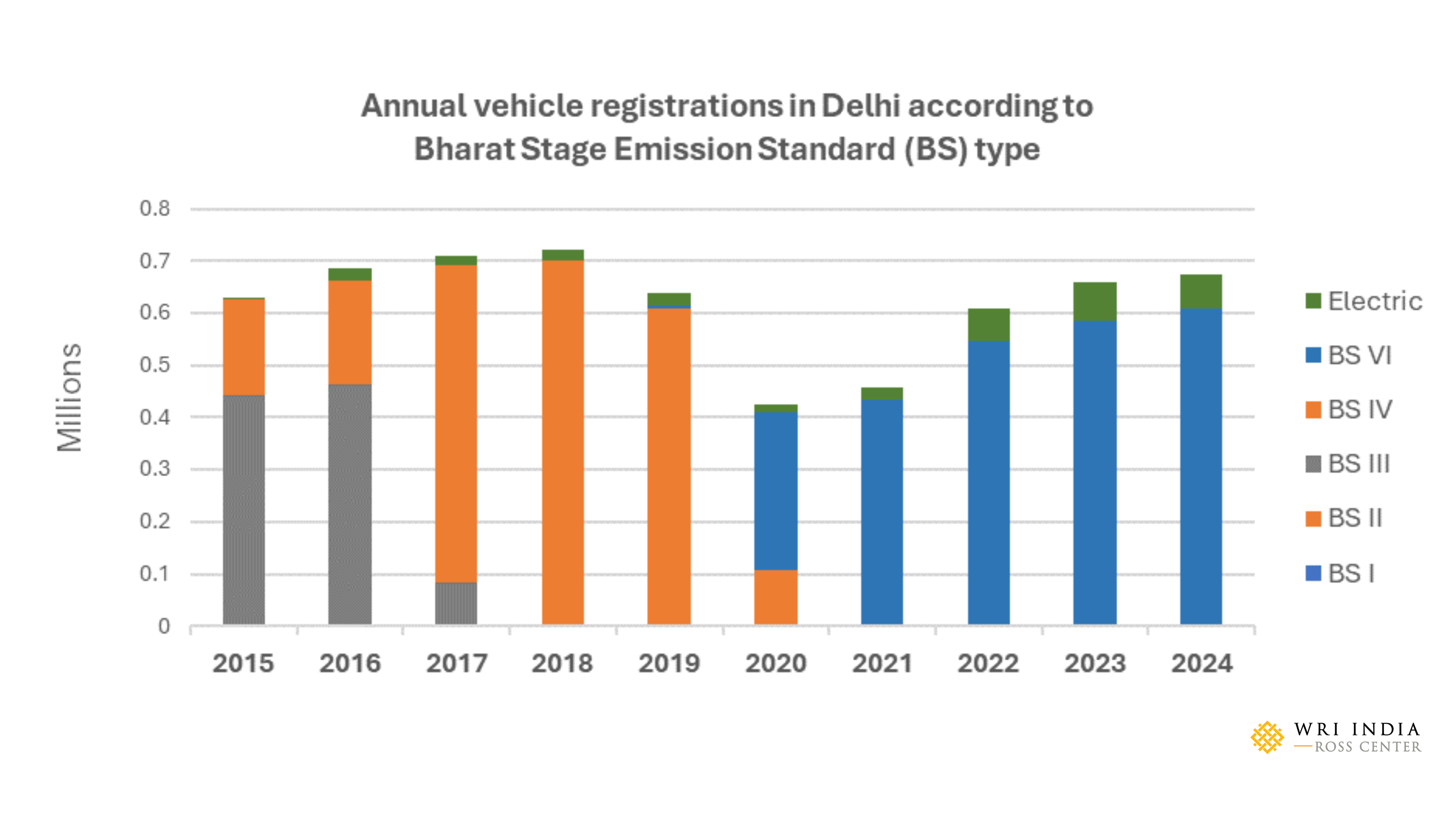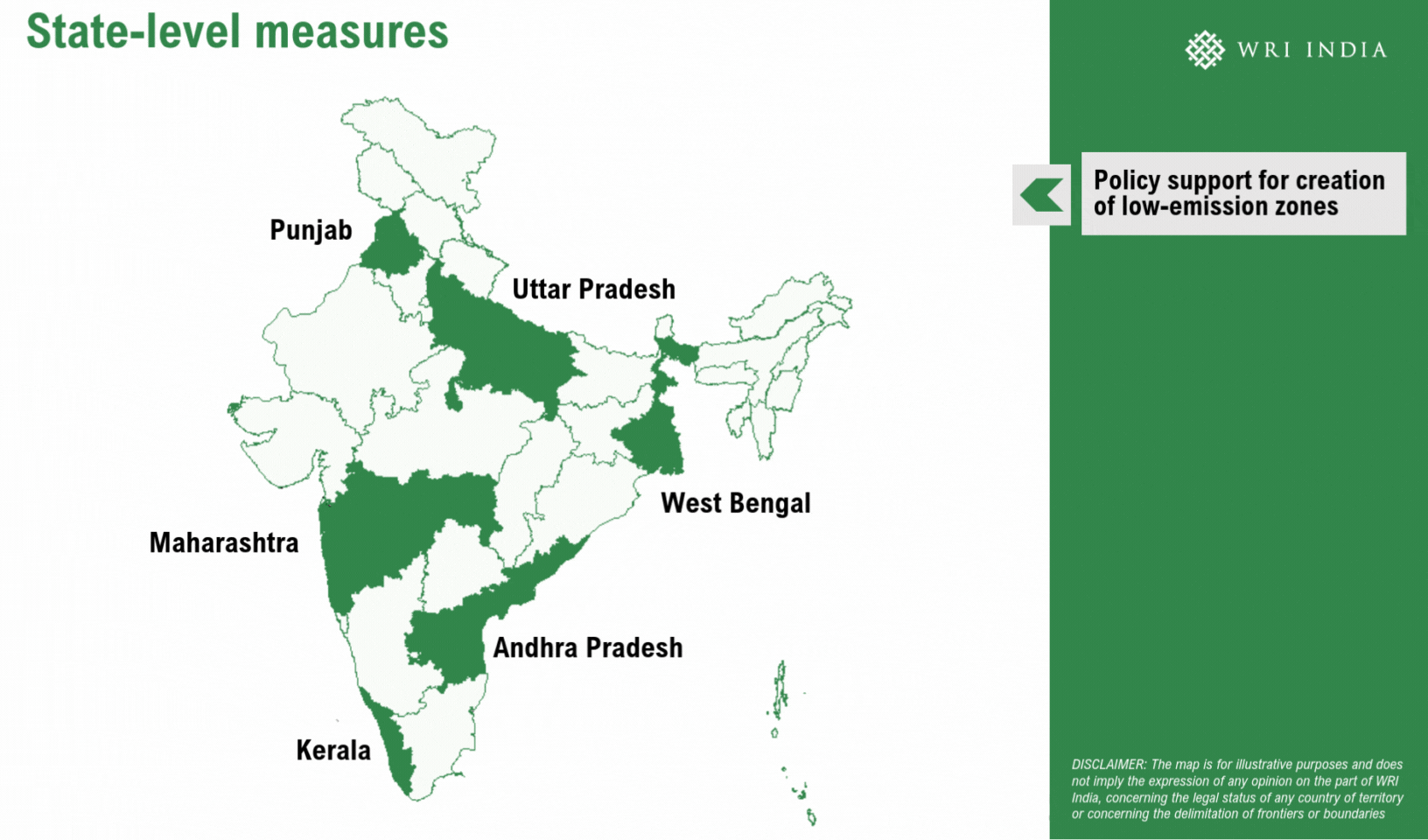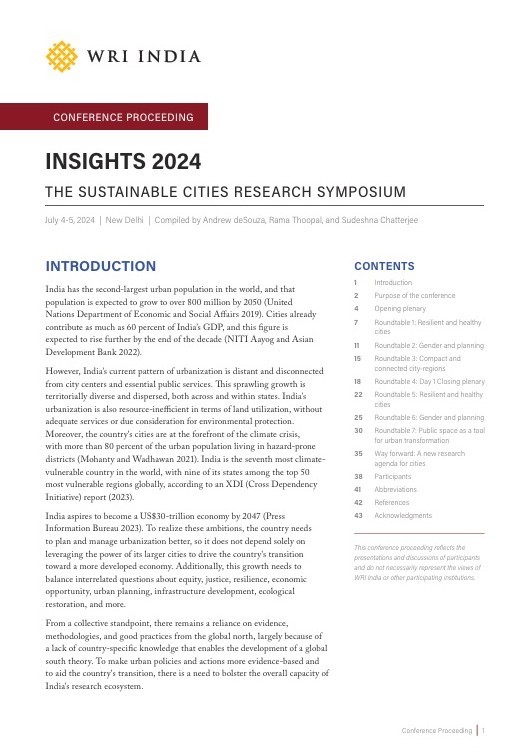Low-Emission Zones: A Blueprint for Delhi's Urban Transformation
by , e -
India's urban centers are grappling with a severe air pollution crisis that poses a significant threat to public health and urban livability. Studies suggest that each year, Delhi records approximately 12,000 air pollution-related deaths, accounting for 11.5% of its total fatalities.
Delhi's air quality crisis is not a temporary inconvenience, despite what the heavy-pollution winter months might suggest. It is a year-round, systemic challenge. Reactive measures like temporary bans and emergency interventions, though necessary in extreme situations, do not address the root causes of air pollution in the city.
Delhi’s Air Pollution Challenge
As per the 2018 source apportionment study for Delhi, vehicular emissions are a significant driver of air pollution, contributing close to 19% particulate matter (PM) 10 and 39% PM 2.5 pollution. The Delhi Statistical Handbook 2024 suggests that the total number of registered vehicles has reached approximately 1.48 crore (14.8 million), with 54.6 lakh (5.46 million) two-wheelers and 20.8 lakh (2.08 million) private cars making up more than 50.7% fleet. While the city has implemented notable measures, such as the compressed natural gas (CNG) mandate for public transport, the surge in personal vehicle ownership has offset these gains.

According to the VAHAN dashboard, Delhi's vehicle fleet exceeds 15 million, growing by 700,000 annually. The continued operation of over 1.3 million Bharat Stage-III vehicles further compounds this challenge. These older, high-emission vehicles, which follow the older emission standards and are reaching their end of life, continue to operate due to ineffective deregistration and scrapping mechanisms. Despite Delhi's efforts to curb vehicular pollution through age restrictions, a substantial portion of its on-road fleet comprises vehicles from neighboring states with less stringent regulations. This influx of older, more polluting vehicles exacerbates both traffic congestion and air quality, necessitating immediate and targeted interventions.
What Are Low-Emission Zones?
Establishing low-emission zones (LEZs) offers a strategic approach to reduce vehicular emissions and improve air quality in the city. LEZs, implemented in over 300 cities globally, including London, Jakarta and Berlin, restrict or penalize high-emission vehicles, encouraging cleaner alternatives like EVs, public transport and shared mobility. These zones have been instrumental in reducing vehicle-related emissions and promoting sustainable urban mobility. LEZs can also build on existing measures such as no-vehicle zones, pedestrianized streets, and EV policies mandating EV adoption and fleet renewals.

Viability of Low-Emission Zones for Delhi
Delhi can implement LEZs through a phased approach over five years, proactively targeting year-round emission reductions. This will also enable swift enforcement of stringent measures during severe air quality episodes under the Graded Response Action Plan (GRAP). Strengthening Automatic Number Plate Recognition (ANPR) camera systems can effectively restrict highly polluting vehicles from entering designated areas. Moreover, coupled with appropriate incentives, the LEZ can nudge a modal shift towards cleaner vehicles, as demonstrated in global cases. Some of the key opportunities for LEZs include:
Achieving targeted action: Delhi's efforts to curb vehicular pollution through stricter standards and public transport expansion face enforcement challenges due to high vehicle volumes. Implementing LEZs in smaller, well-defined areas can enhance enforcement and coordination. This also sets the stage for broader initiatives with the potential for significant regional impact.
Supporting existing policies: LEZs align closely with broader regulatory and policy frameworks, including national-level norms like Corporate Average Fuel Efficiency (CAFE III), which encourages automakers to produce lower CO2-emission vehicles. They also complement state-level initiatives such as the Delhi EV Policy – which offers demand-side and supply-side incentives for EV adoption, the Delhi Motor Vehicle Aggregator, and the Delhi Service Provider Scheme – which mandates the transition of shared mobility services to EV fleets.
Legal feasibility: Delhi's robust legal framework also supports LEZ implementation. For instance, the Air (Prevention and Control of Pollution) Act, 1981, empowers pollution control boards to declare air pollution control areas. Similarly, the Motor Vehicles Act, 1988, allows regulation of vehicular movement in designated areas. The New Delhi Municipal Council (NDMC) Act, 1994, further enables environmental initiatives, making the NDMC area suitable for an LEZ pilot.
Implementing LEZs offers associated benefits beyond just cleaner air. By reducing vehicular emissions, Delhi can lower rates of respiratory and cardiovascular diseases, easing healthcare costs for both the city and its residents. Studies suggest that cleaner air improves public health, enhances productivity by reducing sick days and boosts overall well-being. Economically, LEZs can attract businesses, investors and tourists, driving the city's growth. Prioritizing EVs and shared mobility within these zones also supports global climate goals, positioning Delhi as a leader in sustainable urban development.
It is important to recognize the limitations of LEZs. While effective at reducing local vehicular emissions, they do not address pollution from broader airshed-level sources. Issues like poor air quality from stubble burning in neighboring states or wind-carried industrial emissions may continue to impact the region, limiting the immediate impact of LEZs on transboundary pollution. To address these challenges comprehensively, LEZs should be integrated into a broader strategy that includes regional collaboration and airshed-level interventions.
With existing legislative frameworks, robust infrastructure and administrative capacity, Delhi is well-positioned to successfully implement LEZs. By embracing this proactive approach, the city can pave the way for a cleaner, healthier and sustainable future.


